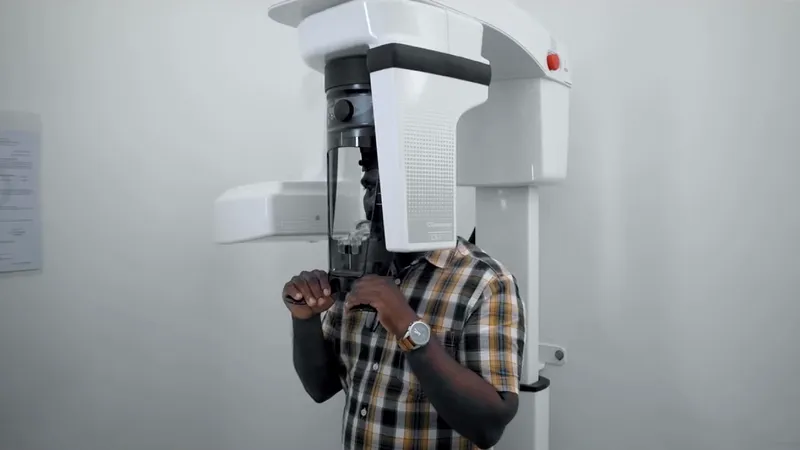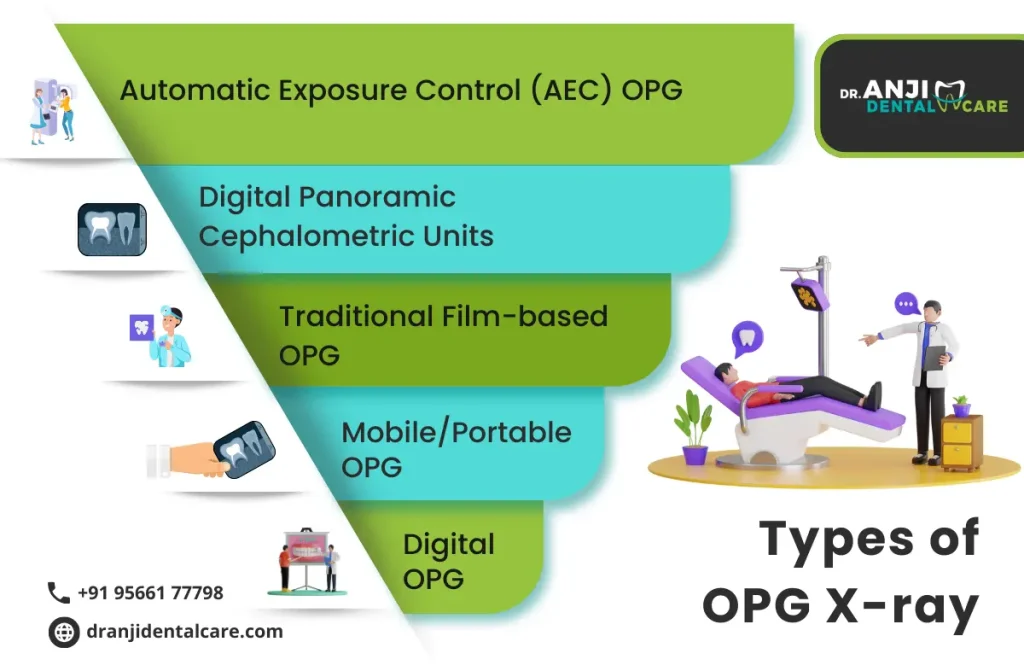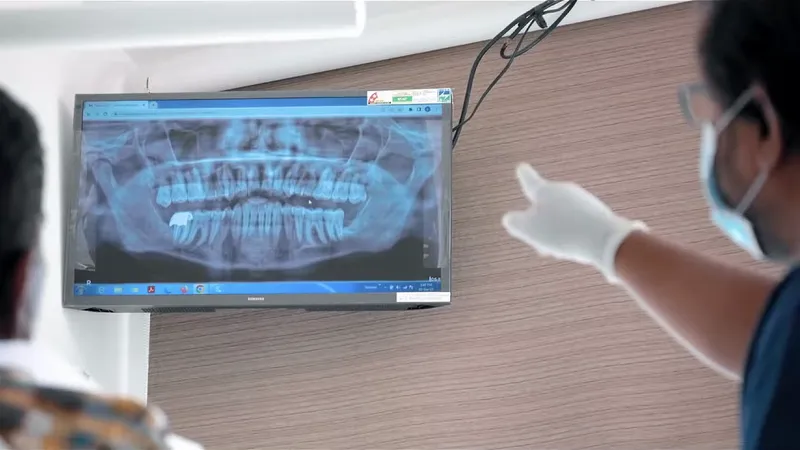OPG (Full Mouth X-Ray Machine)

OPG stands for Orthopantomogram, which is a specialized type of dental x-ray examination that provides a comprehensive overview of the entire mouth, including the teeth, jaws, and surrounding structures. In this page, we will discuss the overview and procedure of OPG in detail.
The digital OPG X-ray centres in Chennai use an OPG machine, a dental imaging device to capture a panoramic image of the entire mouth. It is used by dentists and oral surgeons to diagnose and treat a variety of dental and oral health conditions. OPG images provide a wide-angle view of the teeth, jawbones, temporomandibular joints (TMJs), and surrounding structures such as the sinuses.

Procedure of Digital OPG X-ray Centres in Chennai
The OPG procedure is relatively simple and non-invasive performed at an affordable OPG X-ray cost in Chennai. It involves the following steps:
Patient Preparation
The patient is positioned in front of the OPG machine, typically standing or seated. It is important to remove any metal objects, such as jewelry or eyeglasses, as they can interfere with the x-ray imaging process. At the digital OPG X-ray centres in Chennai, patients are also provided with a lead apron to protect against unnecessary radiation exposure.
Positioning
The patient's head is aligned with the OPG machine's headrest, and the chin and forehead are stabilized using a bite stick. The bite stick ensures that the patient's jaws are in the correct position for optimal imaging.
X-ray Machine Adjustment
The dental professional operating the OPG machine adjusts the machine's settings based on the patient's age and the specific area of interest. The machine used at the top orthopantomogram X-ray centres in Mogappair may have different options for adults and children.
Image Capture
Once the patient is properly positioned, the OPG machine rotates around the head, capturing a complete panoramic image. The machine emits a small, controlled amount of radiation to create the image. The patient needs to remain still during the imaging process to avoid any blurring or distortion.
Image Processing
After the image is captured, it is processed by the OPG machine's computer system. The image can be adjusted and enhanced using specialized software to optimize visibility and provide a clear and detailed view.
Interpretation and Analysis
The final OPG image is viewed and interpreted by a dental professional, usually a dentist or an oral radiologist at the digital OPG X-ray centres in Chennai. They analyze the image to assess the condition of the teeth, jawbones, TMJs, and surrounding structures. The OPG can help identify various dental issues, such as tooth decay, impacted teeth, infections, fractures, and bone abnormalities.
Diagnosis and Treatment Planning
Based on the OPG image, the dental professional at the best OPG dental test centres in Mogappair can make an accurate diagnosis and develop an appropriate treatment plan. The OPG provides valuable information for procedures like orthodontic treatment, dental implants, oral surgery, and comprehensive dental rehabilitation.
Benefits of OPG X-Ray
OPG at the digital OPG X-ray centres in Chennai offers several advantages over traditional dental x-rays:

- Comprehensive View: OPG provides a broad overview of the entire mouth, allowing the dentist at the best OPG dental test centres in Mogappair to assess multiple teeth and structures simultaneously.
- Time-Saving: The panoramic image captured by OPG eliminates the need for multiple individual x-rays, saving time for both the dental professional and the patient.
- Non-invasive: OPG is a non-invasive procedure that does not cause discomfort or pain to the patient. The experts at the top orthopantomogram X-ray centres in Mogappair use this technique as it is a safer option compared to some other dental imaging techniques.
- Diagnostic Accuracy: The detailed OPG image enables accurate diagnosis of dental conditions, leading to better treatment outcomes. The high-resolution images help identify hidden dental issues like impacted teeth, bone loss, and dental infections that might not be visible during regular examinations.
- Patient Education: The OPG image can be shared with the patient, helping them understand their oral health condition and actively participate in the treatment decision-making process.
- Treatment Planning: Perfect for complex procedures like dental implants and orthodontic treatments, helping dentists create more precise and effective treatment plans with better predictability of outcomes.
Conclusion
To conclude, the digital OPG X-ray centres in Chennai use OPG as a valuable dental imaging technique that provides a comprehensive overview of the entire mouth. The procedure is quick, safe, and non-invasive, offering numerous benefits for both dental professionals and patients at an affordable OPG X-ray cost in Chennai. With the detailed panoramic image obtained from OPG, dentists can make accurate diagnoses, plan appropriate treatments, and ensure optimal oral health care.
Frequently Asked Questions
A full-mouth X-ray, also known as a panoramic radiograph or orthopantomogram (OPG), is a dental imaging technique that captures a comprehensive view of the entire mouth, including the teeth, jaws, and surrounding structures. It is recommended to provide a broad overview of the oral and maxillofacial region, assisting dentists in diagnosing various dental conditions, planning treatments, and monitoring oral health.
The frequency of full-mouth X-rays depends on individual factors such as a patient's oral health, age, and risk of dental issues. In general, adults may undergo a full-mouth X-ray every 3 to 5 years, while children or individuals with specific oral health concerns may require them more frequently. Dentists assess the need for X-rays based on the patient's dental history, symptoms, and the overall treatment plan.
While X-rays involve minimal radiation exposure, dental professionals take precautions to minimize potential risks. Lead aprons and thyroid collars are often provided to patients to shield sensitive areas, and modern X-ray machines use digital technology, reducing radiation doses compared to traditional film-based systems. Additionally, dentists follow the "ALARA" principle (As Low As Reasonably Achievable), ensuring that X-rays are only recommended when necessary, and the exposure is kept as low as possible while still obtaining the required diagnostic information.






























